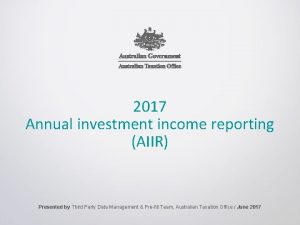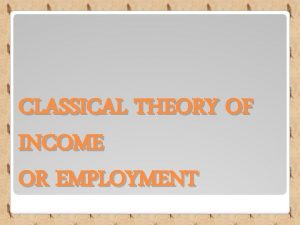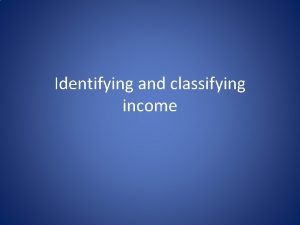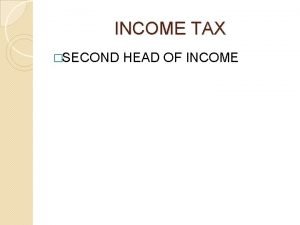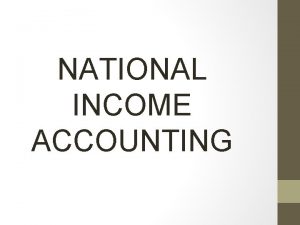INVESTMENT INVESTMENT Investment in theory of income and







- Slides: 7

INVESTMENT

INVESTMENT • Investment, in theory of income and employment, • • means, an addition to the nation’s stock of capital like the building of new factories, new machines as well as any addition to the stock of finished goods or the goods in the pipelines of production. Investment = Inventories + Fixed capital. Thus, investment does not mean purchase of existing securities or titles, i. e. , bonds, debentures, shares, etc. , They do not create income and employment. Real investment means the purchase of new factories, plants and machineries, because only newly constructed or created assets create employment or generate income.

Types of Investment: 1. Gross and Net Investment: investment - depreciation. Net investment = gross 2. Ex-ante and Ex-poste Investment: 3. 4. Ex-ante investment is planned or anticipated investment. Ex-post investment is actually realised investment, or the investment which is not merely planned but which is actually invested or implemented. Private and Public Investment: Private investment - private account and public investment is by the State or local authorities. , the private investment is profit-elastic. In public investment- the profit motives do not enter into consideration. It is undertaken for social good and not for private gain. Autonomous and Induced Investment: Autonomous investment -independent of income level, and depends on population growth and technical progress. Induced investment varies with NI. Changes in NI bring about changes in aggregate demand which has to be undertaken to meet this increased demand. Thus induced investment is income-elastic. Investment is made by the people as a result of changes in income level or consumption. 5. Real Investment: Physical capital

Factors Affecting Investment: 1. Marginal Efficiency of Capital (MEC) or expected rate of profit: 2. Rate of interest: 3. Excess capacity: 4. Technological progress: 5. Political and security conditions:

Investment-Demand Curve: • The investment-demand schedule is also known as MEC schedule. • The MEC schedule shows a functional relationship between MEC and the amount of investment in a given type of capital asset at a particular period of time for the whole economy.

Investment-Demand Curve: • In the above diagram, the marginal efficiency of capital is represented by MEC curve. It slopes downward from left to right which means that as investment increased its marginal efficiency goes down.

Position and Shape of MEC Curve: • The elasticity of MEC determines the extent to which the volume of investment would change consequent upon changes in the rate of interest. If MEC is relatively interest-elastic, a little fall in the rate of interest will result in a considerable expansion in the volume of investment. On the other hand, if the MEC is relatively interest-inelastic, then a considerable fall in the rate of interest may not lead to any increase in the volume of investment.




